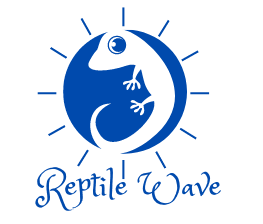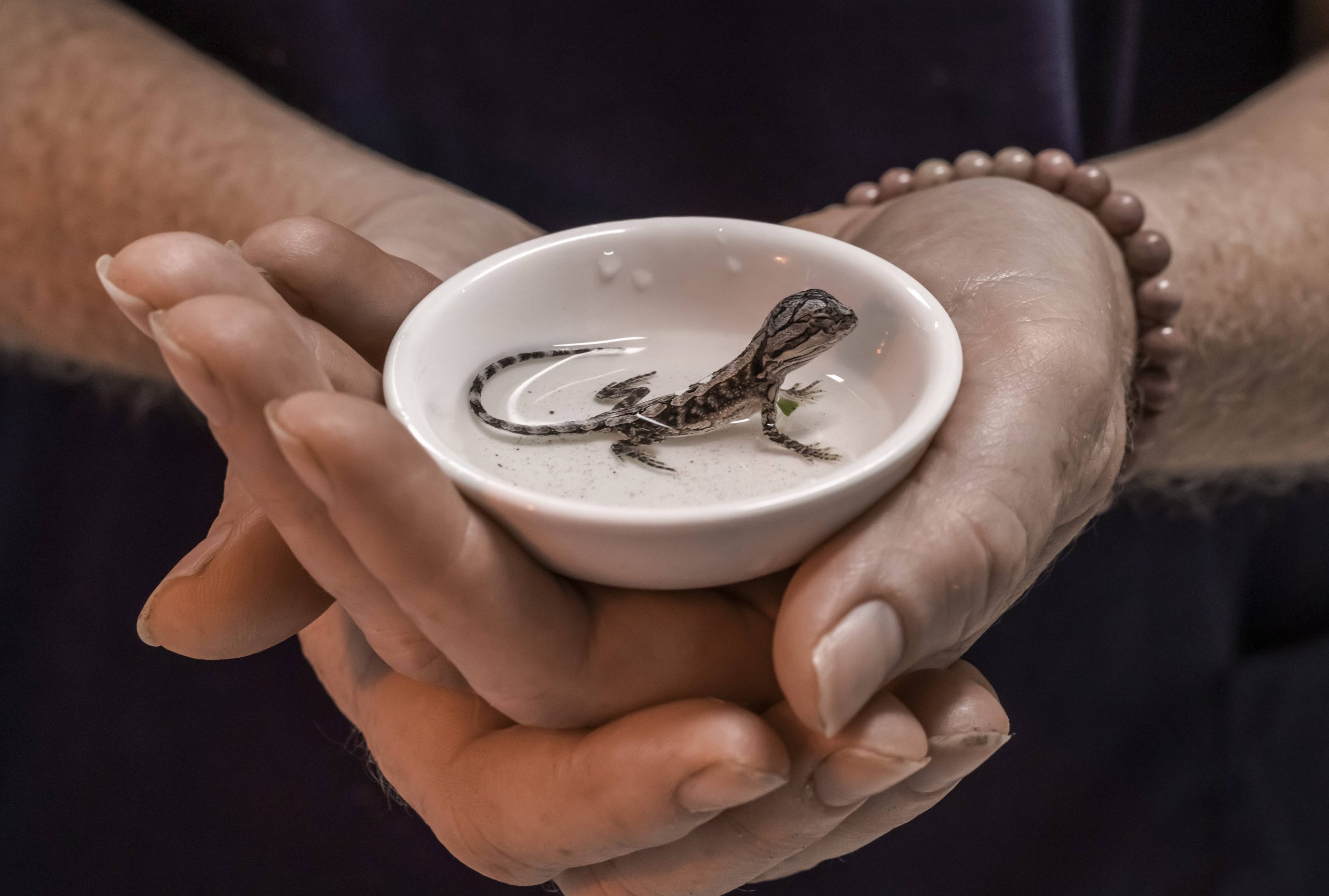Baby bearded dragons exhibit a range of behaviors that can offer insights into their health and well-being. They bask under heat sources to regulate their body temperature and hide occasionally for shelter or when stressed.
A healthy appetite for small insects is a sign of their well-being, but a lack of appetite may indicate illness or stress. Glass-surfing, or repeatedly running against enclosure walls, can signal stress or the need for more space.
In addition, head-bobbing and arm-waving are communication behaviors, while puffing up suggests they feel threatened or stressed. Aggression can occur in dragons housed together, and they need proper sleep and a stimulating environment for exploration.
Always monitor your baby bearded dragon’s behavior and consult a veterinarian if you notice any sudden changes or signs of illness.
What are common baby bearded dragon behaviors?
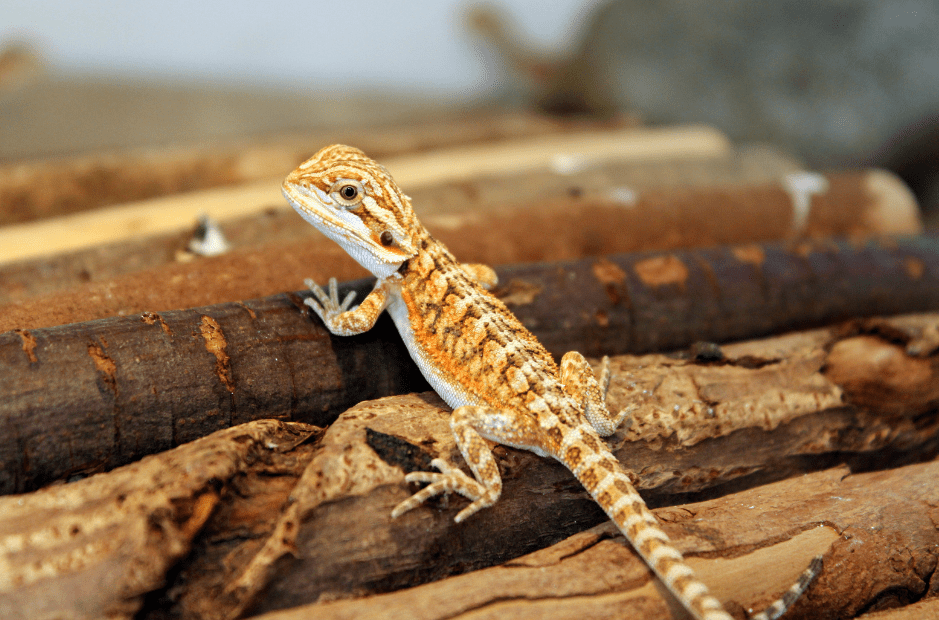
These common behaviors in baby bearded dragons is essential for their physical and psychological well-being.
Basking and Thermoregulation
- Basking Ritual: Basking is an essential behavior for baby bearded dragons. They seek out a warm spot under a heat lamp or heating element to elevate their body temperature. This helps with digestion, metabolism, and overall well-being.
- Thermoregulation: Bearded dragons are experts at thermoregulation. They move between basking spots and cooler areas in their enclosure to maintain their preferred body temperature. Understanding this behavior is crucial for providing a proper thermal gradient in their habitat.
Hiding and Seeking Shelter
- Natural Instinct: Baby bearded dragons, like their wild counterparts, have a natural instinct to seek shelter and hide when they feel threatened, stressed, or when they need to rest. Provide hide spots or shelters in their enclosure to accommodate this behavior.
- Privacy and Safety: Hiding offers them privacy and a sense of safety. It’s a way for them to reduce stress, especially if they feel exposed or vulnerable.
Feeding and Appetite
- Healthy Appetite: Baby bearded dragons usually have hearty appetites. They are typically active hunters and will readily consume a variety of small insects, which are a vital part of their diet.
- Variability: Their appetite may vary day-to-day, which is normal. Factors like temperature, time of day, and individual preferences can influence their eating habits.
Communication Behaviors (Head-bobbing, Arm-waving)
- Head-bobbing: Head-bobbing is a common communication behavior, especially in males. It can serve as a display of dominance or a reaction to perceived threats. Understanding the context in which it occurs can help decipher its meaning.
- Arm-waving: Arm-waving is another form of communication, often seen in response to other dragons or new environments. Additionally, it can be a way of signaling submission or recognition of a higher-ranking dragon.
Defensive Behaviors (Puffing Up)
- Defensive Response: When baby bearded dragons feel threatened, they may puff up their bodies to appear larger. This is a defensive behavior meant to deter potential predators. It can be triggered by handling unfamiliar surroundings, or other stressors.
- Reducing Stress: It’s important to minimize stressors in their environment and handle them gently to avoid unnecessary puffing up, which can be taxing on their energy.
Exploration and Activity
- Curiosity: Baby bearded dragons are naturally curious and love to explore their surroundings. They will investigate their enclosure, climb on rocks or branches, and even dig in the substrate.
- Activity Patterns: Bearded dragons are diurnal, meaning they are most active during the day. Encourage their activity by providing an enriched habitat with opportunities for climbing and basking.
How to manage baby bearded dragon behavior in captivity?
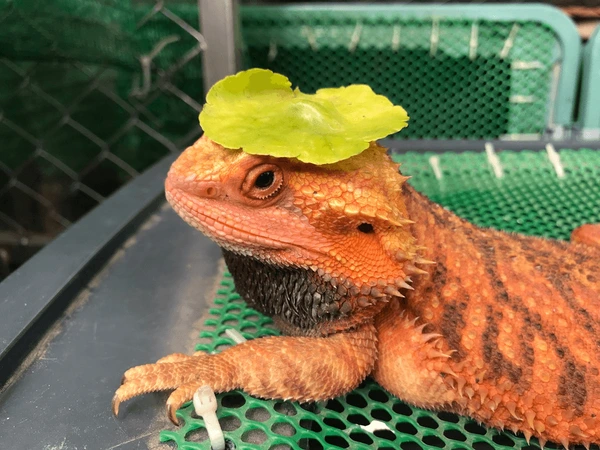
The specific housing, temperature, diet, and interaction needs of baby bearded dragons in captivity is essential for their health and well-being. Proper care and a well-designed enclosure can help them thrive and exhibit natural behaviors while in captivity.
Housing and Enclosure Setup
Enclosure Size: Baby bearded dragons need a spacious enclosure to thrive. A 20-gallon tank is suitable for a single baby, but larger enclosures are preferable to accommodate growth. Providing adequate space is crucial to prevent stress and territorial behaviors.
Substrate: Use a safe and appropriate substrate, such as reptile carpet, paper towels, or ceramic tiles. Avoid sand or loose substrates, as they can lead to impaction if ingested.
Hide Spots: In addition, create hiding spots with rocks, logs, or half logs to mimic their natural burrowing behavior. Providing a secure hiding place allows them to feel safe and reduce stress.
Temperature and Lighting Requirements
| Information | Details |
| Basking Temperature | Baby bearded dragons require a basking spot with temperatures ranging from 100-110°F (37-43°C). Use a heat lamp or ceramic heat emitter to provide the necessary warmth. |
| Cool Zone | The enclosure should have a cooler area with temperatures around 80-85°F (27-29°C) to allow for thermoregulation. This temperature gradient is crucial for their well-being. |
| UVB Lighting | Bearded dragons need UVB lighting for calcium absorption and proper bone development. In addition, ensure you have a UVB light in the enclosure, and replace it as recommended by the manufacturer. |
Importance of Proper Diet
Insect Diet: Baby bearded dragons are primarily insectivores. Offer a variety of small, appropriately-sized insects like crickets, mealworms, and dubia roaches. Dust the insects with a calcium supplement to prevent calcium deficiency.
Vegetation: As they grow, you can introduce a variety of leafy greens and vegetables to their diet. Ensure a balance between insects and greens to meet their nutritional needs.
Feeding Schedule: Establish a regular feeding schedule. Baby bearded dragons often eat multiple times a day, and offering food in the morning when they are most active can encourage healthy eating habits.
Handling and Interaction with Humans
Gentle Handling: Bearded dragons can be tamed and enjoy interaction with humans. Handle them gently and support their body properly. Frequent, careful handling can help them become more comfortable with human contact.
Limited Stress: Minimize stress by avoiding sudden movements, loud noises, and overcrowding in their enclosure. Stress can lead to behavioral problems and health issues.
Respect Individual Preferences: Each baby bearded dragon has a unique temperament. Some may enjoy human interaction, while others may be more reserved. Respect their preferences and don’t force interaction.
How do baby bearded dragons behave in the wild?
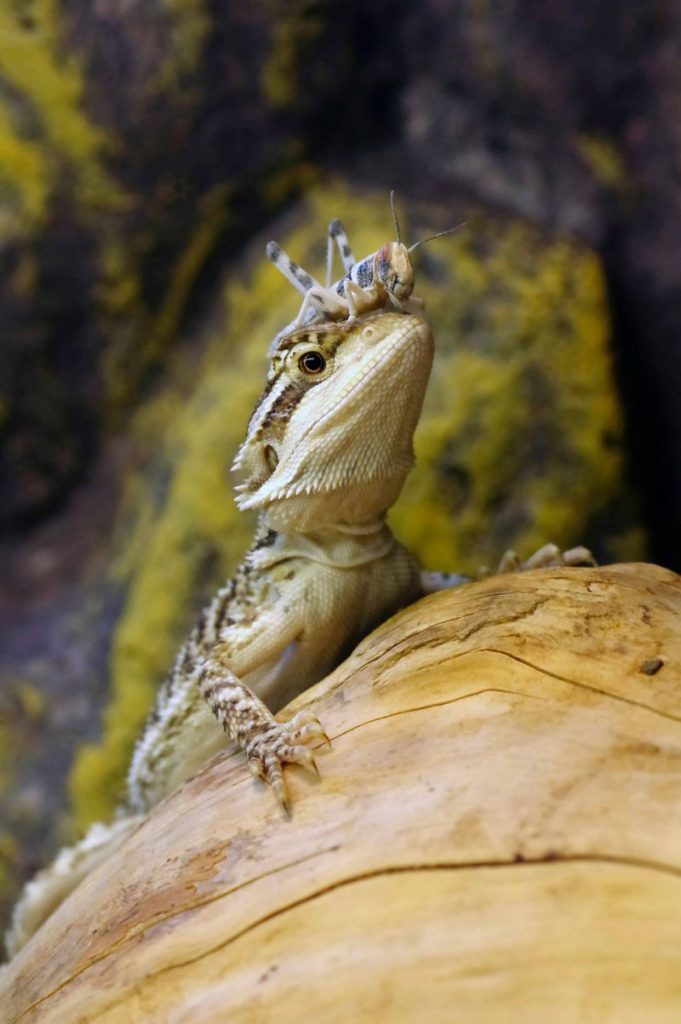
The nature of baby bearded dragon’s behavior in the wild provides valuable insights into their requirements in captivity, including the need for proper temperature regulation, a suitable diet, and the potential for territorial and reproductive behaviors.
Habitat and Environment
Habitat Diversity: Baby bearded dragons are native to the arid and semi-arid regions of Australia, where they inhabit a diverse range of environments, including deserts, grasslands, and woodlands. Their ability to thrive in such varied habitats highlights their adaptability.
Burrowing Behavior: Bearded dragons are known for their burrowing behavior, and baby bearded dragons are no exception. In the wild, they dig burrows to escape extreme temperatures, seek shelter, and hibernate during colder months.
Thermoregulation: Bearded dragons are ectothermic, meaning they rely on external sources of heat to regulate their body temperature. Moreover, they bask in the sun to warm up and retreat to burrows or shaded areas to cool down.
Diet and Feeding Habits
Insectivorous Diet: Baby bearded dragons are primarily insectivores in the wild. They feed on a variety of small insects, such as crickets, ants, termites, and beetles. This diet provides them with essential protein and nutrients required for growth.
Opportunistic Feeders: Bearded dragons are opportunistic feeders, meaning they eat when food is available. In the wild, they actively forage for insects and occasionally consume vegetation.
Water Consumption: Baby bearded dragons obtain a significant portion of their water from their diet. They may also drink from dew, rain, or puddles when available.
Social Interaction
Solitary Lifestyle: Bearded dragons are generally solitary creatures. They establish territories and tend to be territorial. Baby bearded dragons are no exception and can display territorial behavior even from a young age.
Aggressive Encounters: Social interactions in the wild often revolve around dominance and territorial disputes. Furthermore, adult males may engage in head-bobbing and arm-waving displays to assert dominance, while females may communicate their receptivity during the breeding season.
Hierarchy within Groups: In certain situations, multiple bearded dragons may share a territory, but a hierarchical structure exists within these groups. Dominant individuals get preferred access to resources.
Reproductive Behavior
Breeding Season: Baby bearded dragons mature and reach reproductive age at around one year old. Breeding typically occurs in the spring and early summer when environmental conditions are ideal.
Mating Rituals: Mating rituals involve male displays of dominance, which include head-bobbing, arm-waving, and even some aggressive behaviors. Males compete for access to females, and copulation occurs after a successful courtship.
Egg Laying: After mating, females lay eggs in carefully chosen locations, often in sandy or loose soil. They bury the eggs to protect them, and the incubation period depends on temperature.
FAQ’s
Yes, baby bearded dragons can be friendly and tame with proper handling and socialization. Their temperament may vary, but they often become accustomed to human interaction.
Avoid overhandling, exposing them to extreme temperatures, and providing improper diet. Also, don’t house different-sized bearded dragons together as it can lead to territorial disputes.
No, bearded dragon bites are usually not painful. They have small teeth designed for gripping prey, and their bites rarely break the skin or cause significant discomfort.
Baby bearded dragons primarily love a diet of small insects like crickets and appropriate greens. They also enjoy basking under a heat lamp and exploring their environment.
Baby bearded dragons can exhibit signs of boredom, such as glass-surfing or excessive hiding, if they lack mental and physical stimulation. Providing enrichment and varied surroundings can help alleviate boredom.
No, bearded dragons aren’t like dogs or cats, so walking them on a leash isn’t a common practice. They are better suited for exploration within their enclosure, which should be enriched for their well-being.
Final Words
All things considered, taking care of baby bearded dragons involves understanding their natural behaviors, providing the right habitat and environment, and monitoring their health and well-being. Furthermore, they thrive when their enclosure replicates their natural habitat and meets their temperature, lighting, and dietary needs.
Regular observation and interaction with these reptiles can strengthen the bond between you and your pet.
However, if you notice any changes in behavior or signs of illness, it’s essential to consult a veterinarian who specializes in reptile care. By following these guidelines, you can ensure a happy and healthy life for your baby bearded dragon.
